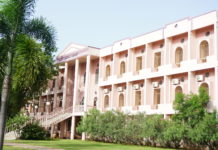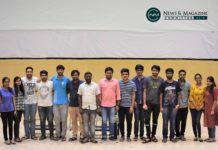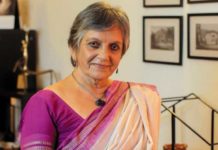Dr. Soumya Lipsa Rath is an Assistant Professor in the department. of Biotechnology. Out of the 60 proposals that were submitted to the COVID-19 High Performance Computing (HPC) Consortium, hers was one of the 32 that got approved. The Consortium manages a range of computing capabilities that span from small clusters to some of the largest supercomputers in the world. One of these supercomputers has been assigned for this proposal. It was our pleasure to interview her about the proposal and its progress in fighting COVID-19.
Dr. Soumya, can you tell us how you got to work on this project?
Computational companies from all over the world like Google, Microsoft have put together their supercomputing facilities and sent out a word to all the researchers who were interested in the study of COVID-19; and to come up with proposals to fight the pandemic.
This was the only project to get selected from India. How was your proposal’s idea/area of research different from all others? What do you think was a key factor?
As soon as this pandemic hit the globe, big industrialists especially those from pharmaceuticals and biotech companies got into a race to bring vaccines or any other probable medicine against COVID-19. I think everyone else probably just started off with the method of research and clinical trials, which is time-consuming and can take more than 5-6 years for the medicine/vaccine to come to market. As the method I proposed was both time saving and cost-effective, it was selected.
Can you tell us about the positive impact your project can bring to combat COVID-19?
Our project is focused on using the computing consortium to make speculations regarding this virus possible and to reinvestigate all the probable factors for understanding its transmissibility. For example, I will first make a simulation/model putting all the properties of the virus and then changing the external properties (like the surrounding temperature) to see if any transformation takes place in the structure or in any internal property of the virus. This information itself gives concrete proof saving millions of iterations otherwise required.
How long have you been in the field of biocomputing, simulation/modelling?
I have been doing this since 2009. It’s been 11 years now.
What is the role of NITW’s infrastructure in your proposal?
I’m yet to discover that. I’m expecting a positive response from the administration.
Are there any interesting conclusions made in the project till now?
As of now, I’m in the beginning stage of the project and have not made any.
Can you tell us about the status of the research regarding COVID-19 in the world?
Many therapeutic approaches such as vaccines and plasma therapies are being tested. These approaches are for direct application. However, basic research such as identifying proteins, using disease epidemiology, statistical analysis and disease modelling, computer-aided drug designing etc., are also carried out to help better understand COVID-19.
How close are we in identifying a cure for COVID-19?
It is unpredictable to determine our proximity to the cure. Since this is a matter of human life, we have to be 100% sure before prescribing any form of medication, and many experiments are being carried out with that motive.
Everyone in the college is proud of you for this achievement and many see you as a source of motivation. So what are some of the suggestions you would give to students who would want to excel in research like you?
Please don’t force yourself into research. It is not something which can be forced upon. If you truly love the subject and don’t mind questioning the facts given, go for it. If you have this attitude, you will surely succeed.
Recently, our college has signed an MoU with IIT Delhi so that students can get into a direct PhD programme, immediately after their bachelors. The PhD life is always known to be rigorous and time-consuming. Please share your experiences about your PhD days at IIT Madras.
Yes, PhD is hectic for sure. It took me six years to complete it. You get very little output even though you work excruciatingly. But the satisfaction you get after obtaining the output is worth the effort. The best part is that your name is directly associated with the research.
You’ll go down in the pages of history.
Do you have any message to the student community? Anything they should practice/follow irrespective of their area of interest.
Students tend to have goals. I have seen all the students including myself, focusing either on research or placements. But in times of crisis, anything can happen. I completed my B.Tech in 2008, in the period of a financial crisis where I, in spite of clearing GATE with a good rank could not get into any higher programmes in IITs. So I sat at home for six months, applied again and got into IIT Madras. I just want everyone to be mentally prepared for the worst. Remember, time heals everything. You should never give up on your dreams, however hard they may seem.
Dr. Soumya is being assisted by Dr. Kishant Kumar, Assistant Professor from Chemical Engineering department, NITW. He received his PhD from IIT Guwahati, and was also a Research Associate in IISc Bengaluru. He has been with NITW since Nov ’19.
Dr. Soumya Lipsa Rath completed her BTech from IASE, Rajasthan and has a direct PhD from IIT Madras in Computational Biophysics. She’s also a Post Doctoral fellow from Nagoya University, Japan and has been a part of the NITW family since Nov ‘19.
-article by Piyush and Mahitha, NMC Reporters.





